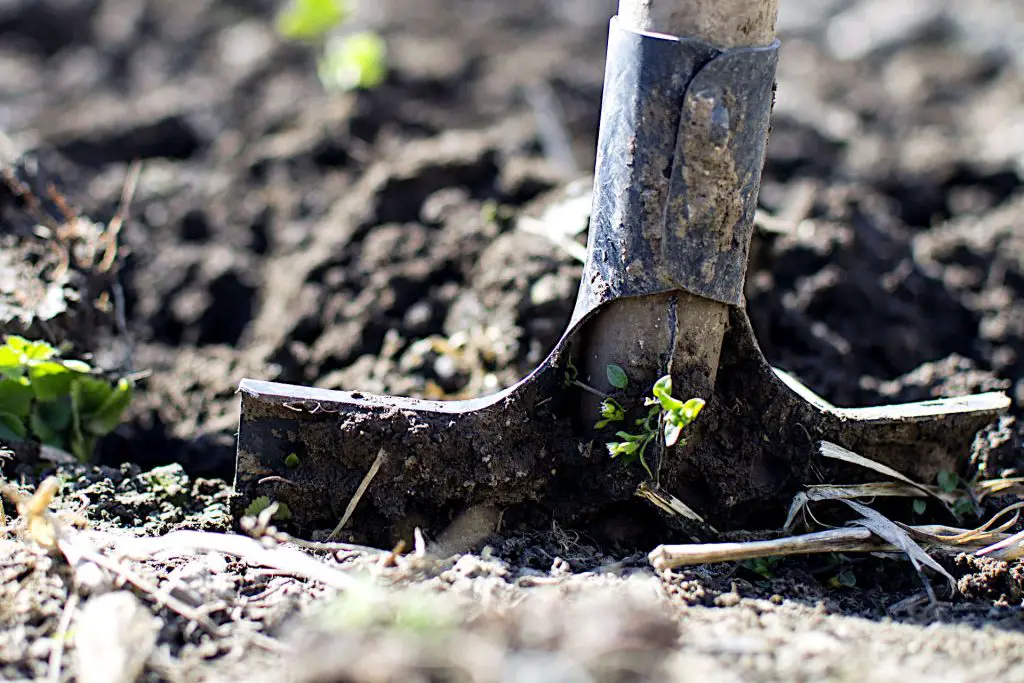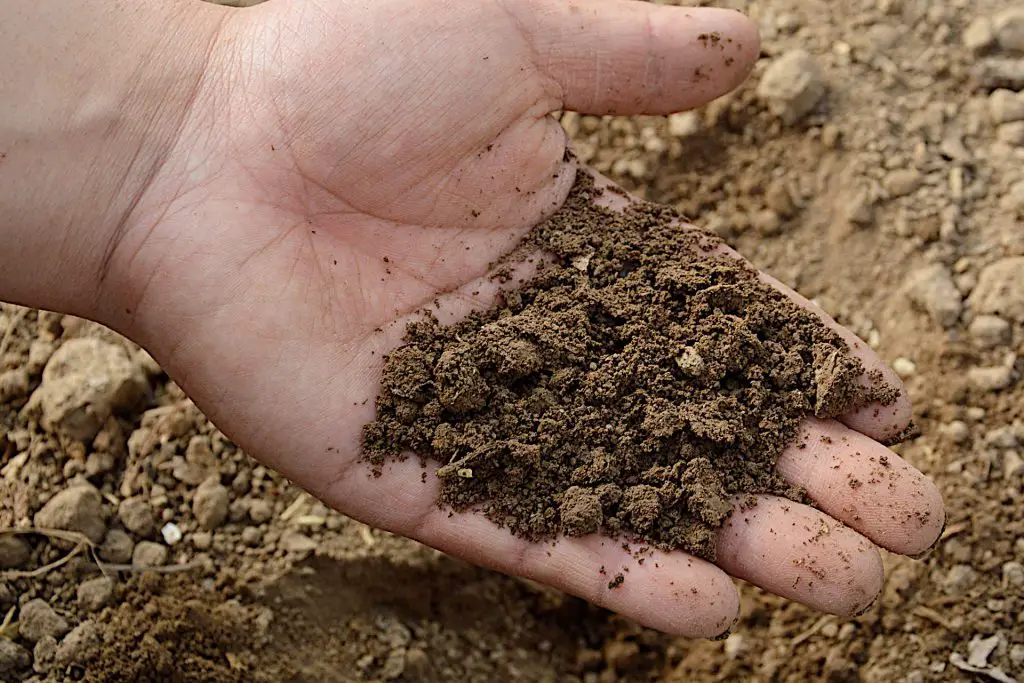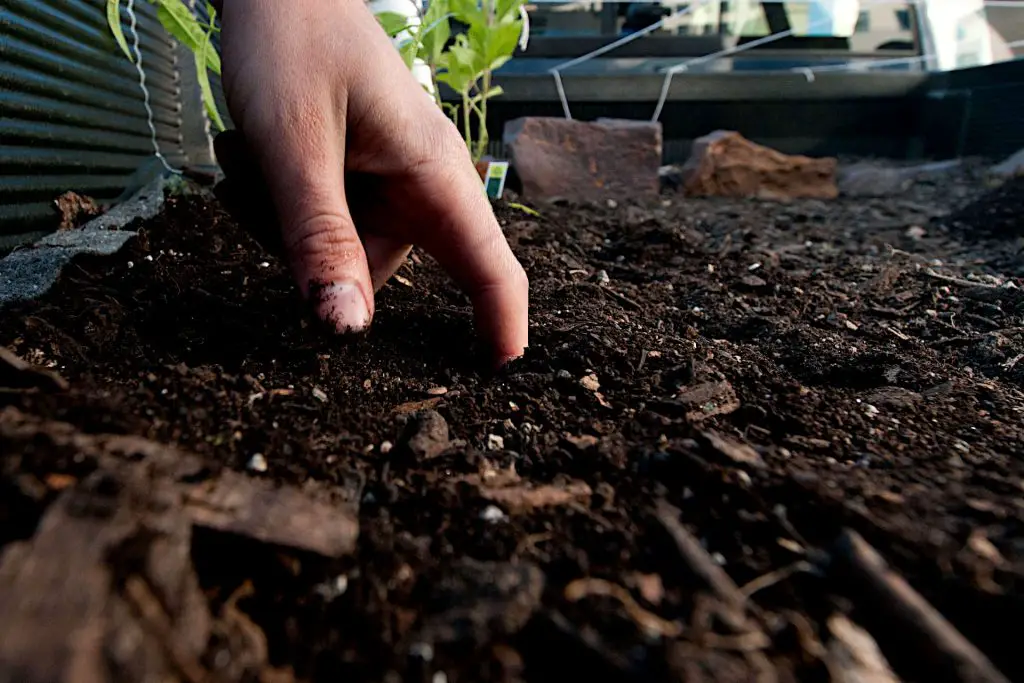Soil to Compost Ratio: How Much Compost Should You Add to Your Soil?
The ratio of soil to compost should be adjusted differently depending on the type of plant and the environment in which it is being grown, the nutrient levels in the compost, and the level of nutrients currently in the soil. In general, if growing border plants or flowers in beds, a soil-to-compost ratio of 2:1 should be used. If you are growing in pots or containers the compost level should be reduced to a 3:1 soil-to-compost ratio to permit adequate air circulation.
The process of amending the soil is an essential step in maintaining the health of plants and soil. Compost is one of the most widely used and straightforward forms of soil amendment. It is an organic material, it is easy to home produce or buy and there are a number of varieties and types.
Determining the correct amount of compost to add to your soil depends on a number of factors. These range from the nutrient levels of both the compost and the soil, the type of environment that you are growing in, ground beds, raised beds or containers, and the plants that you are looking to grow.
Nutrients in Compost

Adding compost as an amendment to your soil greatly enhances the nutrient quality of the soil and should help your plants thrive. The type and quantity that you add is dependent on a number of factors one of which is nutrient content.
There are various types of compost that you can use from homemade compost, shop-bought compost, mushroom compost, and various animal manures. You will find all are commonly used in gardens,.
The ratio of nutrients that each of these varieties provides will vary. Generally, these nutrients are measured in terms of Nitrogen, Phosphorous, and Potassium (NPK) with each of these minerals providing different benefits to your plants.
- Home-made compost has higher nitrogen to phosphorous ratio 3 : ½ : 1 (NPK) making it a great all-around and starter compost.
- Shop-bought compost tends to be more balanced with 1 : 1 : 1 (NPK) and is a good all-round compost
- Mushroom compost has fewer nutrients overall as it has less of a variety of components than other composts. It has elevated salt levels meaning you shouldn’t use it with germinating seeds.
- Chicken manure is high in nitrogen and good for growing vegetables. You should not harvest within four months of application
- Cow manure has a good balance of all nutrients with lower nitrogen levels than chicken manure. It is good for most plants but again you shouldn’t harvest within four months of applying to the soil.
Soil testing
Soil testing is an incredibly important step in determining the ratio of soil to compost. It is something you should carry out on a regular basis, at least once a year, and can be carried out with soil test kits that you can buy at most garden centers or online.
It will give you a good indication of the quality of your soil and the nutrients that it needs to give for it to be able to provide the best growing conditions.
It also can flag up problems such as high nitrogen or phosphorous levels in the soil and issues they can cause. This will influence the type of compost that you use and help avoid future problems.
What Is the Ideal Soil to Compost Ratio
The proportion of soil to compost that should be used varies from one type of plant to another, from one location to another, and to soil type and quality.
| Type of Plant Grown | Soil-to-Compost Ratio |
|---|---|
| Flowers, bedding plants in-ground beds | 2:1 |
| Flowers, bedding plants in pots or boxes | 3:1 |
| Vegetables in-ground beds | 3:1 |
| Trees | 9:1 |
| Raised beds | 2:1 or 1:1 |
What if Your Soil Is of Poor Quality

There are various types of soil each with different characteristics, some are better at growing certain types of plants than others. In addition, the nutrient content can be very different from garden to garden. It is for these reasons that soil testing is important if you want to get the best results and maintain and improve the soil ecosystem for future growing seasons
Types of soil
The main types of soil that are most common are chalky, sandy, clay, silt, peat, and loam. The type of soil you have will be determined by the geological makeup of the ground in your area.
Loam Soil to Compost Ratios
Loam is considered the best type of soil. This is a mixture of the other types of soil in particular clay, silt, and sandy. The main advantage of loam is that most plants will easily grow in it.
When working out your soil-to-compost mix, provided that it is not nutrient deficient, the above table will be a good guide.
Clay Soil to Compost Ratios
Clay soil is very common. It has some advantages in that it retains water and nutrients but has the drawback of being dense which can be a problem, particularly for roots to force themselves deep into the ground and drainage can be an issue.
In terms of soil to compost ratio as clay soil tends to retain its nutrients well, you should instead consider adding sand to the mix to reduce the density and improve drainage. If you consider that loam soil is around 25% sand, you can add between 4 : 1 (soil-to-sand) before then adding the compost as per the table above.
Chalky Soil to Compost Ratios
If you have chalky soil then you will probably have a slightly alkaline soil. It drains well but has difficulty retaining water and minerals such as iron and magnesium. This results in this type of soil often providing poor growing conditions.
To deal with this you are probably going to have to conduct regular soil tests to monitor nutrient levels. Using the right type of amendments will be important with chalky soil and you will have to choose your compost accordingly.
Whilst you can use shop-bought or home-produced compost you are probably going to have to supplement them with the lacking nutrients. For example, if the soil has low nitrogen levels you will need a nitrogen-rich compost or additional nitrogen fertilizer. In addition, a lot of plants struggle in overly alkaline soil so you might look at making the compost more acidic. This can be done by adding pine needles to rebalance the pH of the soil.
Peat Soil to Compost Ratios
Peat already has a large organic content as it’s largely made up of decayed plant material. It tends to have fewer nutrients than other soil and can also have poor drainage. Peat is also acidic and as such, some plants will struggle.
Any lack of nutrients will dictate the compost choice. The nutrients would need to be supplemented by those from the compost and other amendments, such as fertilizer, to ensure the full range of nutrients is available to the plants for healthy growth.
You can largely stick to the table above but choose the correct type of compost. Home produced will be okay although additional fertilizers might need to be used. Garden Centers might have specialist compost that has different nutrient balances. To deal with reducing the acid levels in the soil you might need to add lime which increases the pH level, although you will want to regularly test.
Silt Soil to Compost Ratios
Silt soil is produced by decomposing minerals which makes it a nutrient-rich soil. However, it can be prone to erosion as it crumbles into fine particles if not kept moist.
When looking at silt soil-to-compost ratios, compost is actually a fantastic amendment for silt, and it can help provide the soil with more structure. The only thing that you have to be careful of is to not overdo the salt levels. If nutrient levels are average then you can increase the ratios in the table above to around 2 : 1 soil to compose for beds.
If you are worried about elevated nitrogen and salt levels then you can mix in loam or clay soil. Mushroom compost might also be a good option. You can even consider adding compost that has been left too long and leached a lot of its nutrients.
Lacking in Nutrients or Nutrient Imbalance

If after conducting a soil test you find that your soil is either lacking nutrients or there is an imbalance or excess of a particular salt, you should adjust your soil-to-compost ratio to reflect this.
Adding too much compost can overly increase nitrogen or salts in the ground, which can be detrimental to your plants. If you have soil readings that show anything above 100 ppm (parts per million) for phosphorous or 150 ppm (parts per million) for nitrogen then you should refrain from adding compost.
If there are particular deficiencies in certain nutrients you might want to consider specialized composts or fertilizers that target the deficiency.
Final Thoughts: Soil to Compost Ratio
Adding the right amount of compost to your soil is important in order to get good growing results. Without compost, your plants could well struggle to find all nutrients they need.
The exact ratio though is dependent on various factors such as the type of soil you have, the environment in which it is planted, and what you are growing. Generally though, if your soil is in good condition, a ratio of 2:1 or 3:1 will work well.
To achieve the best soil-to-compost ratio it is advisable to test your soil on a regular basis. This will allow you to be able to provide the best growing conditions for your plants and shrubs.
